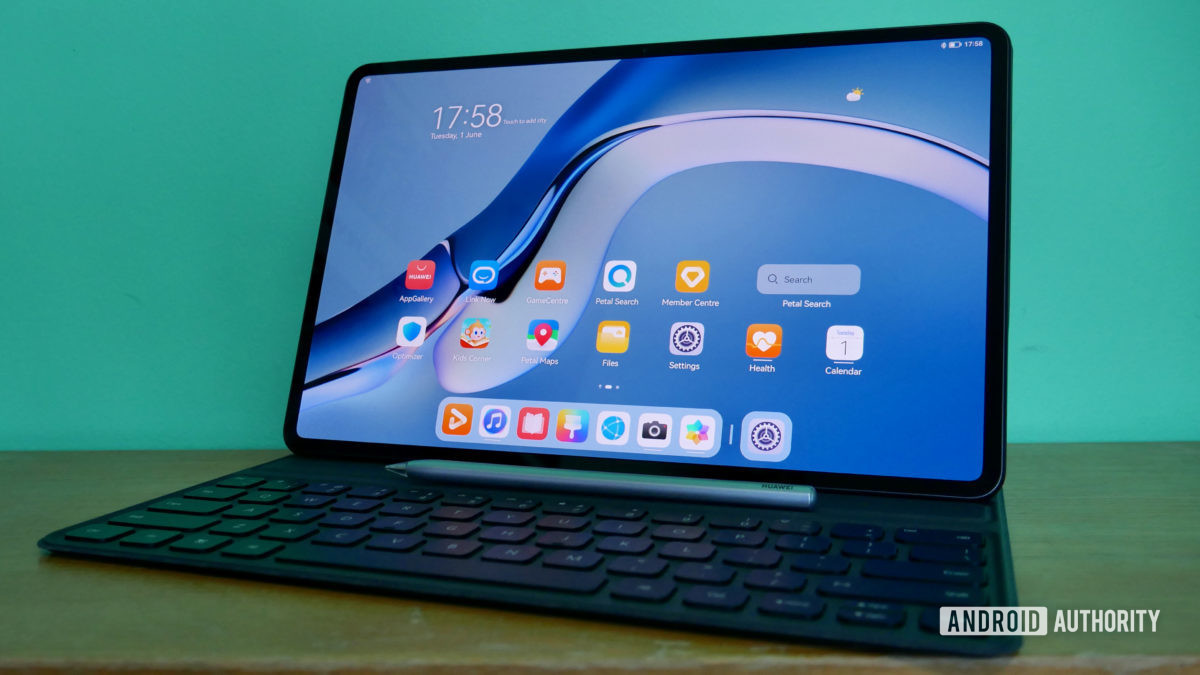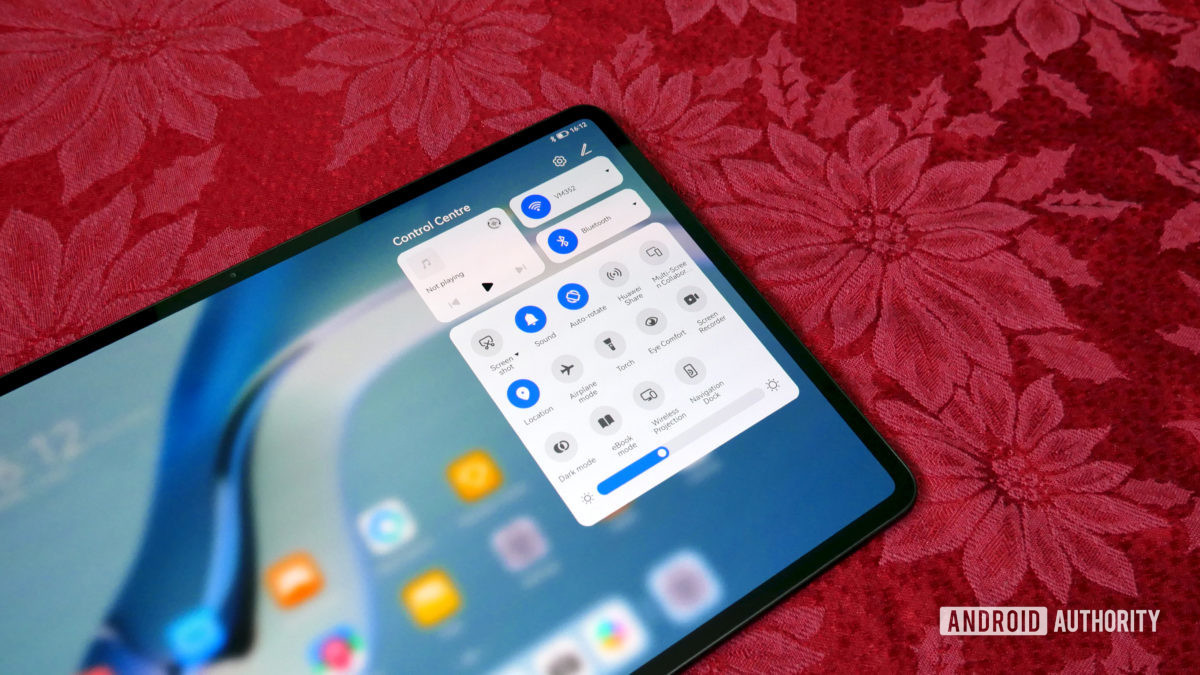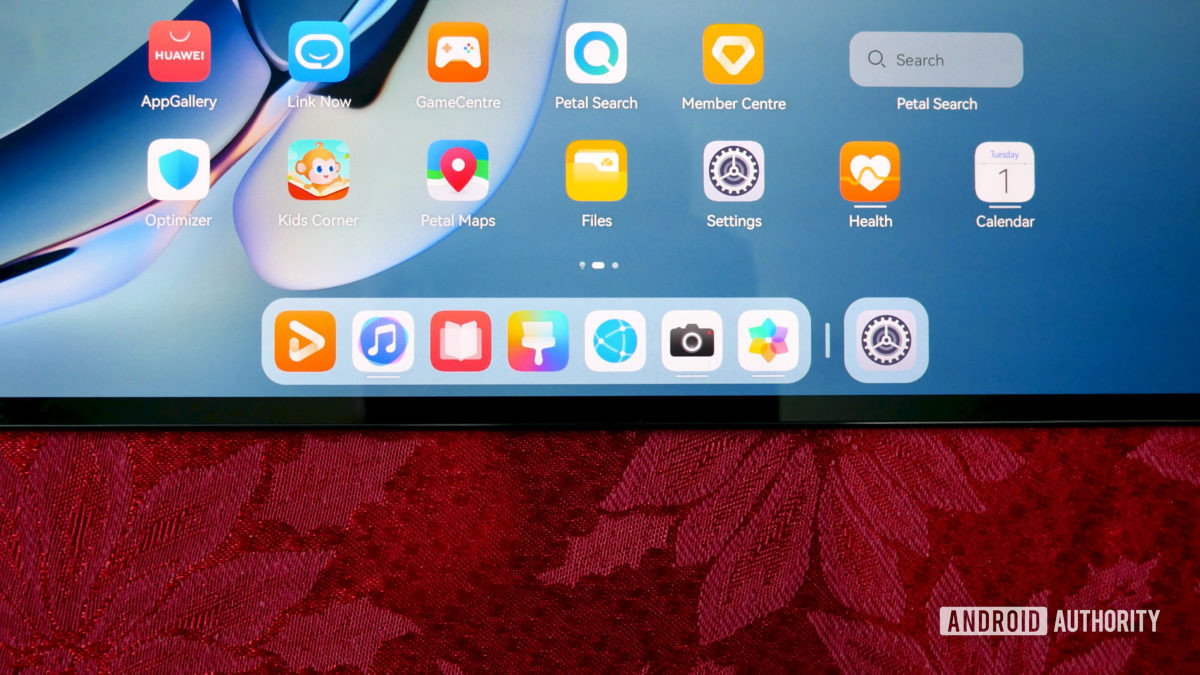Huawei’s first Harmony OS tablets have a very familiar interface

- Huawei has unveiled its first tablets running HarmonyOS, the MatePad Pro and MatePad 11.
- The new interface will be more than a little familiar to iPad fans, not to mention Android 10 users.
- Only the 12.6-inch Pro has a Huawei Kirin chip, while the rest have Snapdragon processors.
Huawei has unveiled its first tablet line based on Harmony OS, and the standout feature may be the interface — or rather, the one it borrows. The company has introduced MatePad Pro and MatePad 11 slates whose defining feature is an extremely iPad-like software layout.
The 12.6-inch MatePad Pro, its 10.8-inch counterpart, and the 11-inch MatePad 11 all boast a new “tablet desktop” clearly influenced by iPadOS, complete with a dock section for recently used apps as well as a not-so-subtle replica of Control Center. You’ll have a more free-form layout for app icons and widgets, of course, but the Huawei tablet experience will be more than a little familiar if you’ve ever used Apple hardware.


The familiarity with existing mobile software doesn’t stop there though. Despite Huawei’s claims that this is an all-new operating system, Harmony OS in its current state ultimately appears to be a spin on Android 10 AOSP with a slight rebrand. In fact, based on our early testing it appears to look and act a lot like an updated version of EMUI.
The screenshots below were taken on the original MatePad Pro (running EMUI 11 on top of Android 10) and the new version running Harmony OS 2.0. As you can see, the differences are slight at best — there are plenty of references to Android and the UI is near identical. Huawei may have some “new” tablet functionality, but this appears to currently be an Android fork rather than a true software reinvention. We’ve contacted Huawei for clarification.




You will see some unique features, of course. Huawei says you can turn your MatePad into a drawing tablet for your PC, and drag content from a Windows computer directly to your Harmony OS device’s desktop. There’s an M-Pencil stylus for drawing, too. The OS also includes some iPad-style features, such as using a tablet as a second monitor (like Sidecar for the Mac) or answering calls from a paired phone.
Appropriately, the MatePad Pro line supports a full-size magnetic keyboard attachment with more desktop-like 1.3mm key travel.
The 12.6-inch MatePad Pro is the flagship of the Huawei tablet range. Its OLED screen (albeit only 60Hz) is the centerpiece, but you’ll also find a Kirin 9000E processor, eight speakers, four microphones, and a triple rear camera setup. The 10,050mAh battery can handle up to 14 hours of local video playback, and you’ll have options for 45W wired charging, 27W wireless charging and 10W reverse charging to power phones and earbuds.
Related: The Huawei ban explained
Other Huawei tablet models are based on Qualcomm hardware. The 10.8-inch MatePad Pro is built around the not-quite-flagship-class Snapdragon 870, while the mainstream MatePad 11 uses the older Snapdragon 865. The non-Pro device has a 2,560 x 1,600 120Hz display, though, and it still has the M-Pencil and keyboard support as well as a four-speaker, four-mic audio setup.
Huawei hadn’t offered prices or availability for the tablet range as of this writing. It did say the MatePad Pro would come to Western Europe. However, cost may not matter so much as the app ecosystem. Without Google apps or services, the MatePads may be tough sells unless you can live with their included software.
from Android Authority https://ift.tt/3phGyQv

Post a Comment